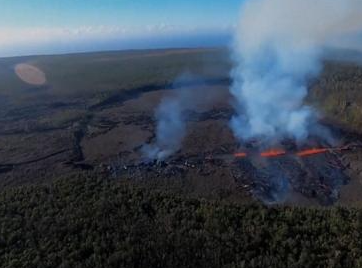Hawaii’s Kilauea Volcano Erupts Again, Spewing Lava and Ash

Hawaii’s Kilauea Volcano, one of the world’s most active, has erupted once again, sending fountains of lava and ash into the sky. The eruption, which began on [specific date], follows months of increased seismic activity and has led authorities to issue warnings for nearby residents and tourists.
The U.S. Geological Survey (USGS) reported that lava began flowing from multiple fissures on the volcano’s summit, creating dramatic lava rivers and plumes of volcanic gas. Although the eruption is currently confined to the volcano’s summit crater, authorities are closely monitoring the situation for potential hazards, including ash fall and lava flow that could impact surrounding areas.
Kilauea, located on Hawaii’s Big Island, has a long history of eruptions, with its last major event in 2018, which destroyed hundreds of homes and forced mass evacuations. This latest activity has renewed concerns about the impact on local communities, though no immediate evacuations have been ordered at this time.
Hawaii Volcanoes National Park, home to Kilauea, remains open, but visitors are being cautioned to stay informed about air quality and avoid areas where volcanic gases are concentrated. Scientists from the USGS are closely monitoring seismic data to provide early warnings if the eruption intensifies or spreads.
Kilauea’s frequent eruptions make it a significant source of both fascination and concern for residents and visitors alike. The volcano is a major part of Hawaiian culture and geography, and while its eruptions are common, they still present serious risks to air quality, infrastructure, and the environment.
As the eruption continues, residents are encouraged to stay updated through official channels and take necessary precautions, especially regarding volcanic ash, which can pose health risks and disrupt air travel.





